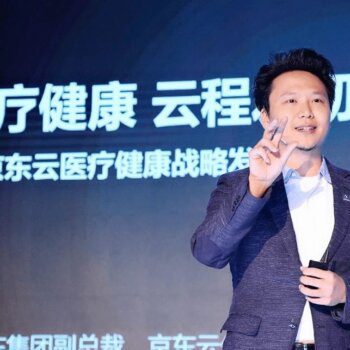Consider Sam, a software engineer at Google. His employer ranks highly in both quality-of-life and salary rankings. Sam is a great coder, and passionate about his work. But Sam is not satisfied: he is sorely tempted to take his savings and launch his own company. There are costs in taking the plunge: entrepreneurship would mean working harder, and investing time and money into a venture that might easily fail with nothing to show for it. On the other hand, success would mean bringing his vision to life, and potentially a financial payoff far beyond what he could hope for as a salaried employee.
Considering just these factors, Sam isn’t sure which way to go, like many other talented technologists. But if one of Sam’s goals is making a big impact on the lives of others, that can tip the balance towards entrepreneurship. Here’s how.
Taking risks and winning big
It’s common knowledge that entrepreneurship is risky business: many firms fold, some enjoy moderate success, and a few become enormous successes, making their founders billionaires. A study by Hall and Woodward, which tracked the fates of thousands of American startups after receiving venture capital investment, shows the strength of this skew. For two thirds of startups, the shareholdings of the founders wound up worth less than a million US (2006) dollars. Over 90% of the wealth gained by founders came from the top 10% of firms, those which returned over $10 million, and almost half the wealth came from the top 2% of firms, returning over $100 million. Thus, even though most firms failed, a randomly selected team of startup founders (with some VC funding) would on average earn $9.2 million by exit (IPO, sale of the company, or failure). The median time to exit was 49 months, with successes tending to exit earlier, so on average founding teams in this sample earned over $2.25 million per year.
| Entrepreneurs’ exit value, millions of 2006 dollars | Percent of companies | Percent of total entrepreneurs’ exit value |
|---|---|---|
| 0 to 1 | 67.4 | 0.7 |
| 1 to 10 | 19.7 | 7.7 |
| 10 to 50 | 8.6 | 22.3 |
| 50 to 100 | 2.4 | 18.4 |
| 100 to 200 | 1.3 | 19.0 |
| 200 to 500 | 0.5 | 15.9 |
| 500 to 1000 | 0.1 | 9.1 |
| 1000 and higher | 0.03 | 6.9 |
Table 4, page 19, “Incentive to Start New Companies: Evidence from Venture Capital,” Robert E. Hall and Susan E. Woodward; Working Paper 13056
What would I do with a tenth Ferrari?
Your first pair of shoes does you much more good than the 47th. Your first cell phone is much more valuable than your third. Your first house is much more valuable than a second. Your first hundred million dollars spent on consumption is much more valuable than your second (since you bought the best buys with the first). In economic terms, people have diminishing marginal utility in money.
So, if all Sam wants is personal consumption, a $120,000 job at Google does pretty well: a nice car, a nice home, and sushi lunches. A chance at making much more as an entrepreneur, even if much higher in expected wealth, might still not be a very good deal because if the venture fails he will have to cut back his spending somewhat, although he would not be impoverished and could just go back to work as a software engineer.
When Woodward and Hall adjust the payoffs to entrepreneurs in their data for risk to reflect this, i.e. when they ask how much people with different levels of risk-aversion should be willing to pay to get the returns of a randomly selecting founding team, the expected returns to founders are slashed. Using standard estimates of risk aversion the expected value of the payout to a founding team from their stockholding is cut by over 90%.
| Coefficient of relative risk aversion (CRRA) | Non-stochastic equivalent of venture payoff, millions of dollars |
|---|---|
| 0 | 9.2 |
| 1 | 2.0 |
| 2 | .9 |
| 3 | 0.6 |
Table 5, page 19, “Incentive to Start New Companies: Evidence from Venture Capital,” Robert E. Hall and Susan E. Woodward; Working Paper 13056
When we further take into account that not all startups reach the point of getting venture capital funding (although Sam’s track record at Google suggests he is relatively apt), the risk-adjusted returns of a startup stake may be in the same ballpark as remaining a salaried employee, despite much higher unadjusted expected returns.
What am I going to do with my tenth vaccine? Vaccinate another kid!
But Sam isn’t only interested in personal consumption. He also donates part of his salary to help support highly effective charities. And while Sam’s 10th pair of shoes does him little additional good, a tenth donation can vaccinate a tenth child, or a pay for the work of a tenth scientist doing high impact research such as vaccine development. So long as Sam’s donations don’t become huge relative to the cause he is working on (using up the most efficient donation opportunities) he can often treat a charitable donation of $1,000 as just as worthwhile as a 1 in 10 chance of a $10,000 donation.
Thus, instead of giving $10,000 from his Google salary, Sam could plan to give a larger amount if his startup is a success, e.g. half of the proceeds over $10 million. This is the basic theme of the Giving Pledge that many billionaire entrepreneurs have been making recently. Such a plan could leave risk-adjusted personal spending the same, while also gaining a “free lunch” of far greater expected impact on the people Sam is helping.
This “do-gooder bonus” for risky careers doesn’t mean they are right for everyone. Where Sam is torn, some will find that they prefer stability, or that their skills better match professions with less skewed outcomes. Additional information will raise or lower expected returns. But given the sheer size of the wedge between raw expected returns and risk-adjusted returns, it will sometimes be enough to make risk-taking and entrepreneurship the winning choice.
This article was written by Carl Shulman of 80,000 Hours. see more.





























